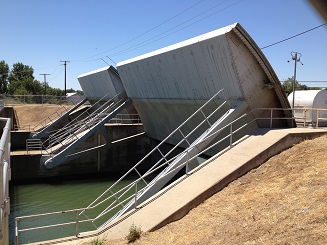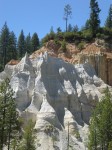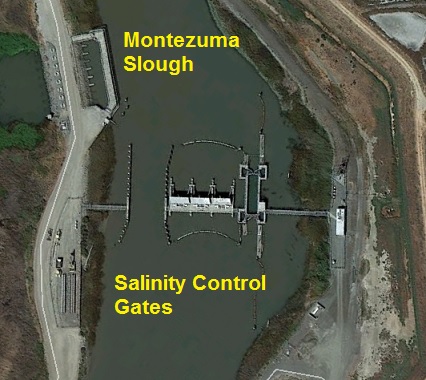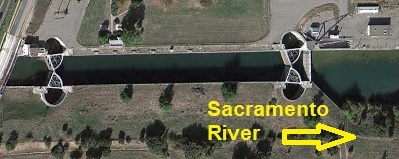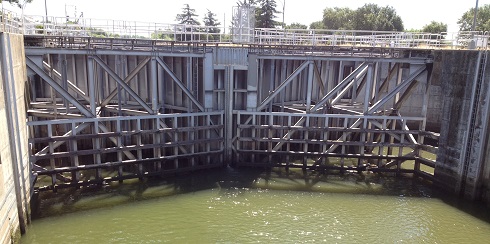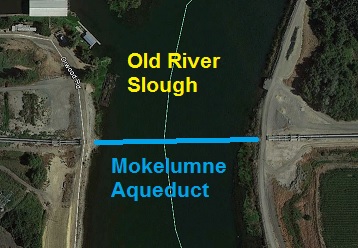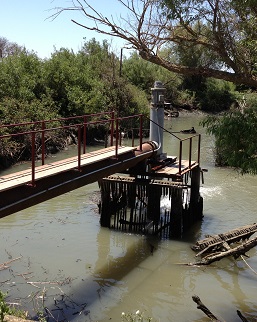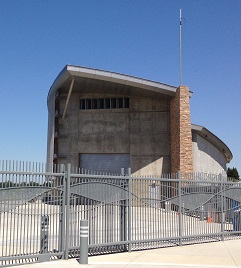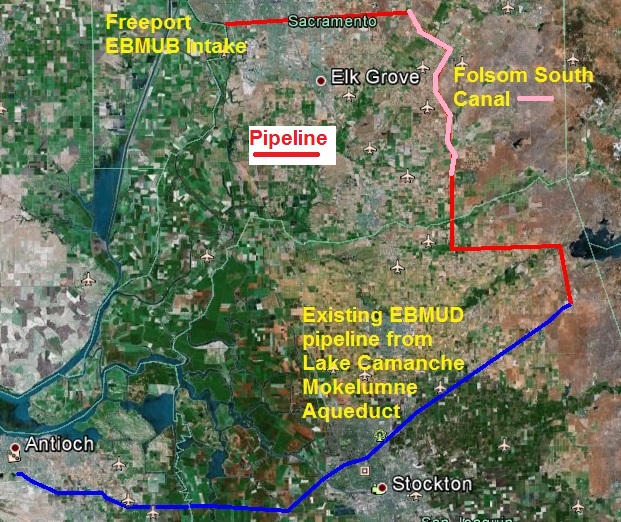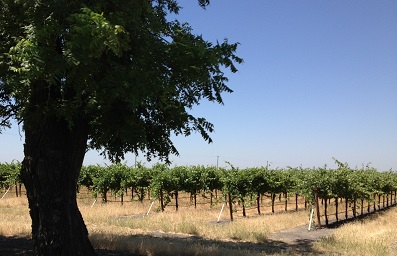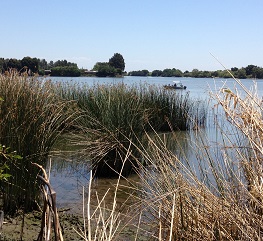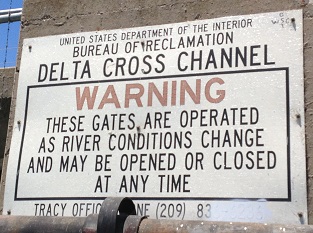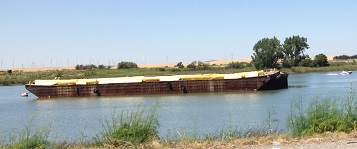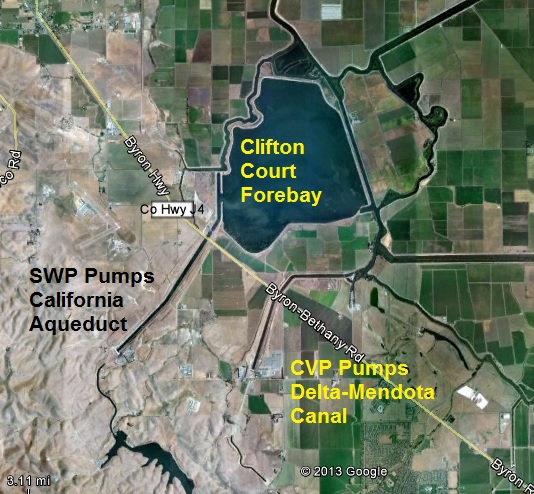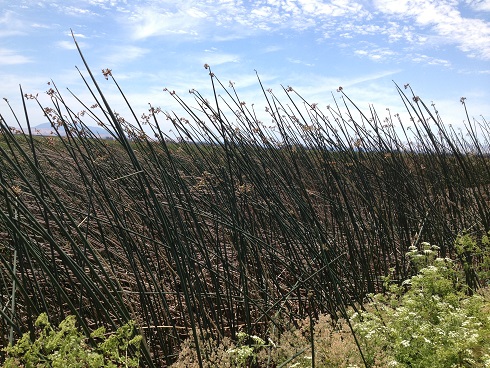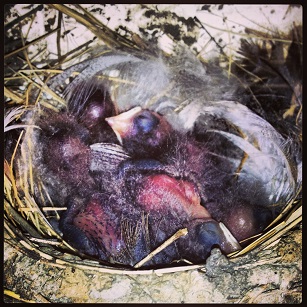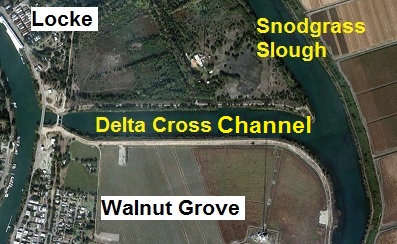The Sacramento San Joaquin Delta has been an object of fascination for me for close to 30 years. When I first started learning about sustainable farming practices and California water policy when studying at UC Davis the Delta figured prominently into the discussions even then. I studied Delta history, organized tours of the infrastructure and generally harbored fantasies of one day living in the Delta. [Click on thumbnails of photos to enlarge]
Will Delta tunnels restore or or destroy?
For the decades that I have been following the various plans to “save” or “restore” the Delta, nothing has happened. We have spent millions of dollars on studies, litigation and advisories councils and the same problems of exist: fragile levees, poor water quality and threatened fisheries. While biologists have studied the ecosystem and government officials talked about solutions ad nauseam, treated sewage discharges have increased and a separate water project to pull fresh water out of the Delta was completed.
More people, more treated sewage for Delta
The Sacramento Regional County Sanitation District (SRCSD) treats the sewage for a wide swath of Sacramento County’s unincorporated area representing approximately 1 million people. With the completion of their main sewage treatment plant in Elk Grove in 1982, SRCSD currently discharges an estimated 150 million gallons of treated sewage per day into the Sacramento River The quality of this water, with high levels of ammonia and nitrate toxic to fish, has been the focal of litigation and the SRCSD is working further treat the water. As population along the Sacramento River watershed increases, additional pollution and treated sewage will invariably find its way into the Delta.
Another straw in the Sacramento River
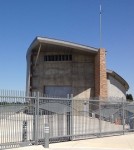
Freeport EBMUD pumping facility on the Sacramento River.
In 1968 the East Bay Municipal Water District (EBMUD) signed an agreement to purchase water from the Bureau of Reclamation. By 1963 EBMUD had already built several aqueducts from Pardee and Camanche reservoirs on the east side of the Sacramento Valley all the way over to the Bay area. At no point does the water from these reservoirs enter the Delta to be pump out. The water from the Mokelumne River is piped across the Delta ensuring a higher quality of water than could be pumped out of the Delta.
EBMUD straw upstream of pee stream
EBMUD was able to negotiate with the City and County of Sacramento to build a water intake facility north of
the town of Freeport in 2002. Conveniently, the placement of the pumps taking water out of the Sacramento River, an amount equivalent to their contract with the Bureau of Reclamation, was sited upstream of the discharge of the SRCSD treated sewage into river. The maximum amount taken out by EBMUD can reach as high as 100 million gallons per day (mgd) with another 85 mgd taken out for Sacramento County drinking water.
Anything but, Delta water
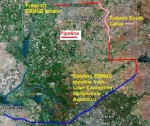
Freeport EBMUD pipeline around the Delta.
In keeping with EBMUD interest to maintain water quality, the pumped Sacramento River water is sent east 15 miles where it flows into the Folsom South Canal. Where the canal ends, it was never completed as part of the Auburn Dam project, EBMUD takes and pumps their water south and east another 14 miles to intercept with the Mokelumne Aqueduct south of Camanche Reservoir. Its then piped across the Delta.
Gravity fed 33′ tunnels
After the Peripheral Canal was voted down in 1982 and years of voluminous amounts of research and meetings about how to move water through the Delta, the California Department of Water Resources released the Bay Delta Conservation Plan (BDCP). The focal and flash point of the plan is the construction of two 33 foot diameter tunnels to move water from the Sacramento, under the Delta, to State Water Project (SWP) and Central Valley Project (CVP) pumps in Byron on the south side. The tunnels would have the ability to move 9,000 cubic feet per second (cfs) of water.
What compares to Delta tunnel project?
In addition to the enormous size of the tunnels and cost, there is also the issue of the spoil or tunnel muck and the acquisition of the

Barge lock at the Port of Sacramento was seldom used and virtually useless today.
necessary land for three sets of water intakes on the river and adjacent forebay. Aside from the historic reclamation of the Delta in the early part of the 20th century with the building of the 1,000 miles plus of levees, the only other rival project is the Sacramento Deep Water Shipping Channel.
Little used Sacramento Deep Water Shipping Channel
While the Sacramento Deep Water Shipping Channel, associated port facilities and lock were designed to move ships and not water, the scope was the same as the Delta Tunnels or Peripheral Canal. The Sacramento River from Collinsville up Prospect Island was dredged and the remaining 30 miles of the 43 mile project saw a new channel cut and levees built up to West Sacramento’ Washington Lake.
[wpdm_file id=76 desc=”true” ]
The deep water channel is 200′ wide at the bottom and 30′ deep with levees high enough to prevent over topping during flood flows from the Yolo By-Pass or adjoining islands. From an Army Corp of Engineers Project Report in 1949 –
- 77.9 million cubic yards of earth were to be moved.
- 5,380 acres of land were to be acquired for right of way purposes
- First cost estimates were $23.7 million
Port of Sacramento: government funded and failed

30 miles of new and improved levees were built for little used Sacramento Deep Water Shipping Channel and Port of Sacramento.
Finally completed in 1963, the Port of Sacramento with its deep water channel has not lived up to the forecasted economic impact. The whole transportation landscape changed and the City of West Sacramento, the last of the municipalities involved in the port management, decided to exit port operations after years of dwindling revenues and increased losses. The water-way associated with the Port of Sacramento is not closing and will continue to be part of the Delta.
A barge lock on the Sacramento River?
An obsolete and seldom used part of the deep water shipping channel is the barge lock. Because the deep water shipping channel is filled with water from the Delta 30 miles away, its surface water level can be several feet lower than the Sacramento River. If a barge wanted to enter the river from the port, a lock was necessary to float the vessel up to the water level of the river.
Delta Cross Canal more useful than barge lock

Delta Cross Canal diverts Sacramento River water to Snodgrass Slough
The lock is kept closed in order to keep Sacramento River water flowing down into the Delta where the only real attempt to distribute water to the south side occurs at the Delta Cross Canal. Sacramento River water is allowed to flow over into Snodgrass Slough in a southerly direction towards the CVP and SWP pumps in Byron. The Delta Cross Canal, finished in the early 1950’s, has a flow of 3500 cfs and similar dimensions to the Sacramento Deep Water Shipping Channel. The gates can be closed during high water level to prevent flooding on southern Delta Islands.
How much water can we suck south with SWP pumps?
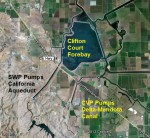
Clifton Court Forebay supplies water to SWP pumps.
It has always been understood that unless additional canals or interior Delta connections were made that it would be difficult to get the higher fresh water flows from the Sacramento River to the pumping plants. This issue was exacerbated after the SWP began operations pumping twice as much water out of the Delta in the 1960’s than the CVP. Yet, nothing has been built since the Delta Cross Canal other than the shipping channel which only probably served to worsen conditions salinity and water flow conditions in the Delta.
Sucking fresh and salt water
Even when the Deep Water Shipping Channel was under consideration, its effect on the Delta was considered. At issue was the additional open water created that would weaken the effect of fresh water coming down the Sacramento River to repel the salt water from the Bay.
From: Army Corps of Engineers, Sacramento Deep Water Ship Channel Project, 1949.

Army Corp of Engineers report that Sacramento Deep Water Shipping Channel will increase salinity in the Delta.

Reclaiming islands may reduce salinity intrusion into the Delta.

Army Corp of Engineer report recommended reclaiming additional Delta islands to reduce salinity intrusion.
Does the Delta need more islands?
Note that the solution to salinity encroachment was the creation of more levees. It was unknown at the time what effect fresh water releases from Folsom Lake would have and Lake Oroville had not been proposed. In effect, additional islands slow the water traveling through the Delta. The islands and levees work like a porous dam to keep the fresh water in and salt water from Suisun Bay out. The Delta does have one modified salinity dam on the Montezuma Slough. Completed in 1989, the Suisun Marsh Salinity Control Gates also have a boat lock like the Sacramento Deep Water Shipping Channel.
Delta island pumps for irrigation and drainage
Like most of the changes to Delta water management, the Suisun Marsh Salinity Control Gates were a result of agreements to meet water quality standards or endangered species regulations. There are several hundred irrigation diversions in the Delta used to pump water out of rivers and sloughs and onto farm land. There are also over 100 pumps that discharge used irrigation drainage water from Delta islands back into the water ways. Do the irrigation pumps have the best screens possible to prevent fingerling fish from being killed? Are the drainage discharges from the islands carefully monitored for fertilizer, pesticide and other chemicals?
Research, litigation driving any Delta changes
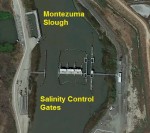
Salinity control gates on Montezuma Slough.
Even with the enormous amount of money spent studying the Delta, it is in no better shape today than it was 30 years ago. Constant research and study reveals the slow decline that has been happening for years. The research is nothing more than a set of eye glasses that brings the blurry ecological damage into focus. The voluminous amounts of research only lend weight to court room arguments that allow judges to restrict pumping from the Delta in order to preserve fish and water quality.
Is there any public awareness of the Delta?
The contentious legislative and public sparring over how to “save” or “restore” the Delta has been no less
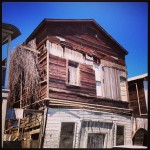
The Delta is like Locke: looks really cool but its falling apart.
dramatic and expensive as controversies surrounding the building of Hetch Hetchy dam and the dewatering of Owens Valley. An element that helped previous water developments was the lack of public access or awareness. The Delta is a similar situation in that there is little public awareness or acceptance of the Delta as a public resource.
Delta: farm factories with no trespassing signs
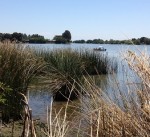
Tidal influences are evident where the Sacramento River meets the Shipping Channel.
It is not easy to navigate the Delta on land. The levee roads are narrow and windy. Cyclists are safer riding their bikes on Interstate 5 as opposed to many of the roads in the Delta. There is limited public access to the Delta for hikers as much of it is private property with ubiquitous signs warning against trespassing. Except for places such as the Suisun Marsh or Grizzly Island that allow for extensive hiking, the Delta remains fairly inaccessible for the non-boating public. There are several state and county parks, some of which are closed due to budget constraints such as Delta Meadows Park. This is a shame because the Delta is a beautiful resource that can only be experience by spending time absorbing the atmosphere and history.
If not tunnels, then what?
I can completely sympathize with the anxiety that Delta enthusiasts and residents have over the proposed
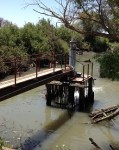
Irrigation pump pulling water out of a slough to water crops on a Delta Island.
Bay Delta Conservation Plan to build the tunnels. The loss of property, cost and disruption are significant. While I am not endorsing the tunnel project, after studying the plan I can understand why they chose the particular configuration. First, the large three sets of water intakes are to minimize the water flow into the tunnels. We have already seen what the massive pumps of the CVP and SWP project can do to suck in small fish with their high velocity sucking action. Second, the 33′ diameters are gravity fed. In order to move large amounts of water without the aid of pumps requires a large area to reduce friction so the water flows freely.
Political vacuum caused by lack of compromise
There are other plans and concepts for moving water through the Delta. One or a combination of these alternatives may be preferable to the tunnel project. However, the lack of consensus or gridlock surrounding the various options creates an obvious vacuum. That vacuum is being filled with the tunnel project.
Delta: always the last link in water projects
Because the Delta was a natural conveyance structure for the transfer of water from north to south, it has always been last to get necessary upgrades to protect the land and ecosystem. If government officials could find a way to fund a Deep Water Shipping Channel that has turned into little more than a fishing lake, they can certainly find a way to stabilize the Delta for the water transfers. Water transfer will not decrease. Sewage discharges into the Delta will not decrease and salt water intrusion from rising sea level will not decrease.
Looks like the Deep Water Shipping Channel could move some water
The Sacramento Deep Water Shipping Channel is similar in dimensions to the Delta Cross Canal. Its overall length makes it comparable to a Peripheral Canal and the construction on par with the the tunnels. The Port of Sacramento, with the necessary deep water shipping channel, turned out to be a colossal waste of tax payer money. Instead of acquiring more private land for the tunnel project, the state should figure out some way to use the deep water shipping channel easements and land.
| Project | Length | Acreage | Bottom Width or Pipe diameter | Maximum Volume | Millions Cubic Yards Dirt Displaced |
| Sac Deep Water Channel | 30 miles | 5380 a | 200′ | N/A | 77 a |
| Delta Tunnels b | 36 miles | 5300 c | 33′ dia. x 2 d | 9000 cfs | 42 e |
| Delta Cross Canal | .75 miles | 575 f | 210′ | 3500 cfs | unkn |
| Freport EBMUB | 30 miles g | unkn | 7′ dia. | 154 cfs | unkn |
| 1982 Peripheral Canal | 43 miles | unkn | 180′ h | 15,0000 cfs | unkn |
| cfs = cubic feet per second | |||||
| a Army Corp of Engineers Report | e Sacramento Bee | ||||
| b C-WIN | f Estimated | ||||
| c Sacramento Bee | g Estimated excluding Folsom South Canal | ||||
| d C-WIN | h C-WIN | ||||
Highest and best use of Delta farm land
Wine grape production in the Delta has exploded in the last couple of years. At first I wondered if wine grapes were the best choice for

Wine grape production has been increasing in the Delta.
such fertile soil that might best be used to grow real food to feed families. However, because wine grapes use about 40% less water annually than a mature alfalfa field and are irrigated with the more efficient drip method, wine viticulture seems like a good alternative crop to help reduce water demand from the Delta. Another positive of wine grape production is that it produces less agricultural drainage that needs to be pumped off the islands and into the Delta.
You want to grab northern California water
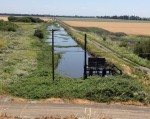
Drainage canal and pumps on a Delta island.
Some people may incorrectly infer that I am advocating for the construction of the Delta BDCP tunnels. My objective with this post is to provide additional information and perspective as to why some sort of water conveyance structure needs to be built in the Delta. When we compare and contrast the scale of a past project like the deep water shipping channel and the recent Freeport EBMUD water diversion projects with the scope of the tunnel project coupled with the declining health of the Delta ecosystem, it is not unreasonable to conclude that some sort of large water project is necessary and feasible to benefit all of California.
Money drives water development not nature
A recent editorial by Senator Diane Feinstein (D-CA) makes the case not just for the BDCP, but a comprehensive multi-faceted water solution that calls for increased water storage and conservation. While I am not thrilled with the prospect of more dams, I am nonetheless resigned to the fact that both population and water demand will increase in our state. It is also not lost on me that much of our economy was and is based on the profits derived from the use of our limited water resources for development.
Delta rose from the mining muck
The fisheries, agriculture and Sacramento River navigation were severely impacted by the debris that flowed down from hydraulic mining operations in the middle of the 19th century. The spoils of hydraulic mining wiped out miles of salmon spawning habitat, levees were breached destroying crops and the Sacramento River was not navigable north of the city of Sacramento. All have recovered only to face new threats from large transfers of water out of the Delta and increasing pollution. Delta will either change with us or with out our intervention.
The solutions will taste as bad as the water

Irrigation drain water from Ryer Island pumped into the Delta
We can fix most of the problems. The solutions won’t be perfect. Not everyone will be happy. I have no vested interest in the Delta beyond my unique outsider’s fascination with the area and as a Californian my desire to see a resolution that doesn’t burden any one specific community. For better or worse we have created a water web in California where different parts of the state seem inextricably link and dependent on the other. Currently the Delta is suffering because the web is not sufficiently strong and the Delta is a particularly unique environment. It’s time to strengthen the Delta with a water project that will in turn bring greater stability to the rest of California.
